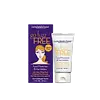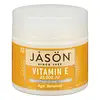What's inside
What's inside
 Key Ingredients
Key Ingredients

 Benefits
Benefits

 Concerns
Concerns

 Ingredients Side-by-side
Ingredients Side-by-side

Water
Skin ConditioningCaprylic/Capric Triglyceride
MaskingHelianthus Annuus Seed Oil
EmollientButylene Glycol
HumectantGlycerin
HumectantGlyceryl Stearate Se
EmulsifyingCetyl Alcohol
EmollientStearic Acid
CleansingDimethicone
EmollientPolysorbate 20
EmulsifyingSodium Behenoyl Lactylate
EmulsifyingPEG-8
HumectantPhenoxyethanol
PreservativeCaprylyl Glycol
EmollientLarrea Divaricata Extract
AntioxidantSodium Polyacrylate
AbsorbentCarbomer
Emulsion StabilisingEthylhexyl Stearate
EmollientSodium Acrylates Copolymer
Allantoin
Skin ConditioningPropanediol
SolventSimmondsia Chinensis Seed Oil
EmollientDisodium EDTA
Lecithin
EmollientSodium Hydroxide
BufferingSorbic Acid
PreservativeBoerhavia Diffusa Root Extract
Skin ProtectingSalix Alba Bark Extract
AstringentTrideceth-6
EmulsifyingPanthenol
Skin ConditioningAscorbic Acid
AntioxidantC11-15-Isoalkanes
PerfumingPentylene Glycol
Skin ConditioningSodium Citrate
BufferingMirabilis Jalapa Extract
Skin ConditioningCitric Acid
BufferingTocopherol
AntioxidantAlcohol
AntimicrobialMagnesium Ascorbyl Phosphate
AntioxidantTocopheryl Acetate
AntioxidantGymnema Sylvestre Leaf Extract
AstringentPotassium Sorbate
PreservativeSodium Metabisulfite
AntioxidantRetinyl Palmitate
Skin ConditioningNarcissus Tazetta Bulb Extract
AstringentBiotin
AntiseborrhoeicWater, Caprylic/Capric Triglyceride, Helianthus Annuus Seed Oil, Butylene Glycol, Glycerin, Glyceryl Stearate Se, Cetyl Alcohol, Stearic Acid, Dimethicone, Polysorbate 20, Sodium Behenoyl Lactylate, PEG-8, Phenoxyethanol, Caprylyl Glycol, Larrea Divaricata Extract, Sodium Polyacrylate, Carbomer, Ethylhexyl Stearate, Sodium Acrylates Copolymer, Allantoin, Propanediol, Simmondsia Chinensis Seed Oil, Disodium EDTA, Lecithin, Sodium Hydroxide, Sorbic Acid, Boerhavia Diffusa Root Extract, Salix Alba Bark Extract, Trideceth-6, Panthenol, Ascorbic Acid, C11-15-Isoalkanes, Pentylene Glycol, Sodium Citrate, Mirabilis Jalapa Extract, Citric Acid, Tocopherol, Alcohol, Magnesium Ascorbyl Phosphate, Tocopheryl Acetate, Gymnema Sylvestre Leaf Extract, Potassium Sorbate, Sodium Metabisulfite, Retinyl Palmitate, Narcissus Tazetta Bulb Extract, Biotin
Water
Skin ConditioningTocopheryl Acetate
AntioxidantGlycerin
HumectantCetyl Alcohol
EmollientStearic Acid
CleansingCaprylic/Capric Triglyceride
MaskingDimethicone
EmollientGlyceryl Stearate Se
EmulsifyingHelianthus Annuus Seed Oil
EmollientPersea Gratissima Oil
Skin ConditioningCitrus Grandis Fruit Extract
AstringentAscorbic Acid
AntioxidantCarbomer
Emulsion StabilisingPotassium Cetyl Phosphate
EmulsifyingPotassium Hydroxide
BufferingSorbic Acid
PreservativeBenzyl Alcohol
PerfumingPhenoxyethanol
PreservativePotassium Sorbate
PreservativeSodium Benzoate
MaskingWater, Tocopheryl Acetate, Glycerin, Cetyl Alcohol, Stearic Acid, Caprylic/Capric Triglyceride, Dimethicone, Glyceryl Stearate Se, Helianthus Annuus Seed Oil, Persea Gratissima Oil, Citrus Grandis Fruit Extract, Ascorbic Acid, Carbomer, Potassium Cetyl Phosphate, Potassium Hydroxide, Sorbic Acid, Benzyl Alcohol, Phenoxyethanol, Potassium Sorbate, Sodium Benzoate
Ingredients Explained
These ingredients are found in both products.
Ingredients higher up in an ingredient list are typically present in a larger amount.
Ascorbic Acid is is pure Vitamin C. This form makes up the largest amount of vitamin C found naturally in our skin.
Not only is vitamin C great for your overall health and immune system, it also has plenty of benefits on your skin.
Vitamin C is best used for brightening skin. It improves dark spots, acne scars, and hyperpigmentation. This is because it blocks the process of skin darkening when exposed to UV.
Remember: Vitamin C should not replace sunscreen!
Your skin uses vitamin C to build collagen. Collagen is one key component in having a strong skin barrier and plump skin. Vitamin C also plays a role in regulating collagen, thus making it effective in improving wrinkles and fine lines.
Ascorbic acid shows potent antioxidant activity. As an antioxidant, it helps fight free-radicals. Free-radicals are molecules that may damage your skin cells. These antioxidants also protect skin against UV damage.
The best formulations include Vitamin E and/or ferulic acid. These two ingredients help stabilize and provide a boost in the benefits of ascorbic acid. This is because ascorbic acid becomes unstable when exposed to UV and air. In fact, you can tell your ascorbic acid has oxidized when it turns an orange-yellow color.
Ascorbic acid is generally compatible with other ingredients. However, using ascorbic acid with other active ingredients might cause irritation. Two ingredients: copper ions and benzoyl peroxide, will inactivate ascorbic acid completely.
Read more about other types of Vitamin C:
Foods rich with vitamin C include oranges, strawberries, broccoli, bell peppers, and more. When consuming Vitamin C, your skin receives a portion of the nutrients.
Learn more about Ascorbic AcidThis ingredient is an emollient, solvent, and texture enhancer. It is considered a skin-softener by helping the skin prevent moisture loss.
It helps thicken a product's formula and makes it easier to spread by dissolving clumping compounds.
Caprylic Triglyceride is made by combining glycerin with coconut oil, forming a clear liquid.
While there is an assumption Caprylic Triglyceride can clog pores due to it being derived from coconut oil, there is no research supporting this.
Learn more about Caprylic/Capric TriglycerideCarbomer is a polymer of acrylic acid. Its main role is to create a gel consistency.
A high amount of carbomer can cause pilling or balling up of products. Don't worry, most products contain 1% or less of carbomer.
Cetyl Alcohol is a fatty alcohol. Fatty Alcohols are most often used as an emollient or to thicken a product.
Its main roles are:
Though it has "alcohol" in the name, it is not related to denatured alcohol or ethyl alcohol.
The FDA allows products labeled "alcohol-free" to have fatty alcohols.
Learn more about Cetyl AlcoholDimethicone is a type of synthetic silicone created from natural materials such as quartz.
What it does:
Dimethicone comes in different viscosities:
Depending on the viscosity, dimethicone has different properties.
Ingredients lists don't always show which type is used, so we recommend reaching out to the brand if you have questions about the viscosity.
This ingredient is unlikely to cause irritation because it does not get absorbed into skin. However, people with silicone allergies should be careful about using this ingredient.
Note: Dimethicone may contribute to pilling. This is because it is not oil or water soluble, so pilling may occur when layered with products. When mixed with heavy oils in a formula, the outcome is also quite greasy.
Learn more about DimethiconeGlycerin is already naturally found in your skin. It helps moisturize and protect your skin.
A study from 2016 found glycerin to be more effective as a humectant than AHAs and hyaluronic acid.
As a humectant, it helps the skin stay hydrated by pulling moisture to your skin. The low molecular weight of glycerin allows it to pull moisture into the deeper layers of your skin.
Hydrated skin improves your skin barrier; Your skin barrier helps protect against irritants and bacteria.
Glycerin has also been found to have antimicrobial and antiviral properties. Due to these properties, glycerin is often used in wound and burn treatments.
In cosmetics, glycerin is usually derived from plants such as soybean or palm. However, it can also be sourced from animals, such as tallow or animal fat.
This ingredient is organic, colorless, odorless, and non-toxic.
Glycerin is the name for this ingredient in American English. British English uses Glycerol/Glycerine.
Learn more about GlycerinGlyceryl Stearate Se is a self-emulsifying (SE) form of glyceryl stearate. Self-emusifying means this ingredient automatically blends with water. It is an emulsifier, emollient, and cleansing agent.
As an emulsifier, Glyceryl Stearate Se prevents ingredients such as oil and water from separating. It is also a surfactant, meaning it helps cleanse the skin. Surfactants help gather oil, dirt, and other pollutants so they may be rinsed away easily.
Emollients help your skin stay smooth and soft. It does so by creating a film on top of the skin that helps trap moisture in.
Learn more about Glyceryl Stearate SeHelianthus Annuus Seed Oil is the oil derived from the seeds of a Sunflower. Sunflower seed oil is non-fragrant. It is an emollient, meaning it helps to soften the skin.
Sunflower seed oil contains many fatty acids. The fatty acids found in sunflower seeds include (from highest amount to least): linoleic acid, myristic acid, palmitic acid, stearic acid, arachidic acid, oleic acid, and linolenic acid.
These fatty acids help the skin create ceramides. Ceramides play a role in repairing the skin barrier.
Helianthus Annuus Seed Oil helps moisturize the skin. This in turn helps the skin look more rejuvenated and smoother.
Sunflowers are rich in vitamin E.
Historians believe Indigenous cultures of North America domesticated sunflowers before corn. Thus they relied on sunflower oil for a variety of uses. One such use is moisturizing skin and hair.
Sunflower seed oil may not be fungal acne safe. We recommend speaking with a professional if you have any concerns.
Learn more about Helianthus Annuus Seed OilPhenoxyethanol is a preservative that has germicide, antimicrobial, and aromatic properties. Studies show that phenoxyethanol can prevent microbial growth. By itself, it has a scent that is similar to that of a rose.
It's often used in formulations along with Caprylyl Glycol to preserve the shelf life of products.
Potassium Sorbate is a preservative used to prevent yeast and mold in products. It is commonly found in both cosmetic and food products.
This ingredient comes from potassium salt derived from sorbic acid. Sorbic acid is a natural antibiotic and effective against fungus.
Both potassium sorbate and sorbic acid can be found in baked goods, cheeses, dried meats, dried fruit, ice cream, pickles, wine, yogurt, and more.
You'll often find this ingredient used with other preservatives.
Learn more about Potassium SorbateSorbic Acid is a preservative. It is the most commonly used food preservative in the world.
Sorbic Acid is a natural antibiotic and highly effective at preventing the growth of fungus. It is less effective against bacteria.
Potassium Sorbate, another commonly-used preservative, is the potassium salt of Sorbic Acid.
Sorbic Acid may worsen eczema. We recommend speaking with a professional if you have any concerns.
Potassium sorbate and sorbic acid can be found in baked goods, cheeses, dried meats, dried fruit, ice cream, pickles, wine, yogurt, and more.
Learn more about Sorbic AcidStearic Acid is a fatty acid. It is an emollient, emulsifier, and texture enhancer.
As an emollient, stearic acid helps soften skin. It aids the skin's protective barrier by preventing water loss. It also provides a gentle cleansing effect without stripping away natural oils.
Stearic acid may also be used to enhance the texture of products. It can add volume and stabilize ingredients such as water and oil. This can help water and oil ingredients from separating.
Sources of stearic acid include animal or vegetable fats/oils such as coconut or shea. It can be naturally found in butter, cocoa butter, shea butter, vegetable fats, and animal tallow.
This ingredient may not be Malassezia folliculitis, or fungal-acne safe.
Learn more about Stearic AcidTocopheryl Acetate is AKA Vitamin E. It is an antioxidant and protects your skin from free radicals. Free radicals damage the skin by breaking down collagen.
One study found using Tocopheryl Acetate with Vitamin C decreased the number of sunburned cells.
Tocopheryl Acetate is commonly found in both skincare and dietary supplements.
Learn more about Tocopheryl AcetateWater. It's the most common cosmetic ingredient of all. You'll usually see it at the top of ingredient lists, meaning that it makes up the largest part of the product.
So why is it so popular? Water most often acts as a solvent - this means that it helps dissolve other ingredients into the formulation.
You'll also recognize water as that liquid we all need to stay alive. If you see this, drink a glass of water. Stay hydrated!
Learn more about Water